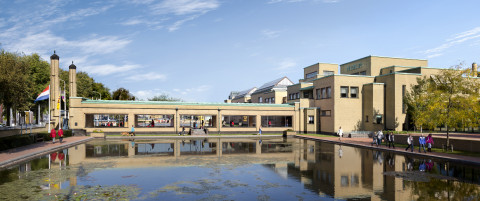
Plan your visit
Visit the Kunstmuseum The Hague. See our openinghours, entrance fees and read about other practical info.
Kunstmuseum Den Haag has a treasure chamber of over 160.000 pieces of art. Here we work on making the highlights from this collection available online.
Attracted by the life of the fishing folk, the emerging bathing culture and, above all, the magnificent interplay of light, sky and water, artists like Jan Hendrik Weissenbruch, Anton Mauve and the Maris brothers often used Scheveningen as a subject for their drawings and paintings, and in so doing made the resort on the Dutch coast world famous.
Beach Life – The Hague School and Scheveningen takes a journey through this fishing village on the eve of momentous change. Slowly but surely, the two sides of life in the village – the hardworking fishermen and their families and the visitors strolling along the promenade – diverged more and more. This can be seen in the work of the Hague School painters in Scheveningen. Jacob Maris (1837 – 1899), for example, painted the toiling fishermen, while his brother Willem (1844 – 1910) depicted the donkeys that gave children rides on the beach. And the work of Anton Mauve (1838 – 1888) featured both the fishing boats being pulled up onto the beach by horses, and elegantly dressed visitors to the resort.
The painters of the Hague School were unequalled in their portrayal of the beauty of the interaction of sky, light and water.
Jacob Maris (1837-1899) painted the fishermen hard at work, while his brother Willem (1844-1910) painted the donkeys that gave children rides on the beach. Anton Mauve (1838-1888) showed the fishing boats being pulled up onto the beach by horses, as well as elegantly dressed visitors to the resort.
Other artists specialised in the magnificent natural scenery of the coast, depicting the constantly changing sea and the richly varied skies in all kinds of weather conditions. Despite the subject matter, the painters of the Hague School used silver-grey for their beach scenes and seascapes. It is the colour of the light over the North Sea, as it is carried across the water to the land.
Alongside over seventy paintings, drawings, photographs and archive material, the exhibition will also feature a unique group of sketchbooks that belonged to Anton Mauve. These books have rarely been displayed because of their fragility, and they will be partly presented in digital form in the exhibition. The drawings give a lively impression of the fishing village in days gone by.
The exhibition has been sponsored by Nationale-Nederlanden.